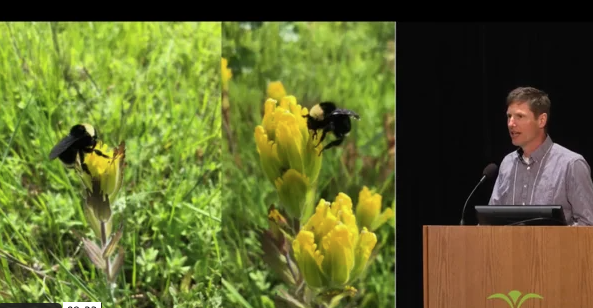
Tom Kaye, Institute for Applied Ecology Golden paintbrush (Castilleja levisecta) is listed as threatened and has become regionally extinct in the southern portion of its range due to habitat conversion. A few wild populations remain in Washington and British Columbia. Efforts to conserve the species in Oregon have emphasized wild seed collection across multiple remnant WA […]
Read More…
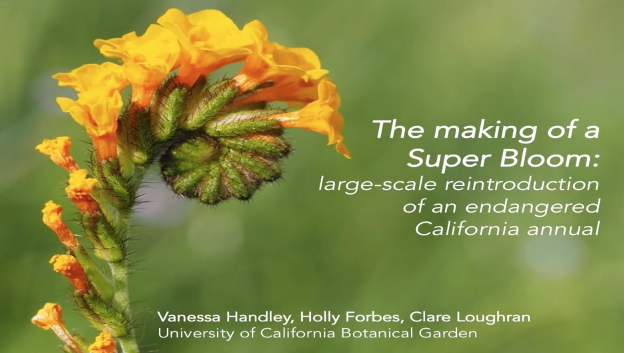
Vanessa Handley, University of California Botanical Garden University of California Botanical Garden (UCBG) has long been engaged in recovery efforts for State and Federally endangered large-flowered fiddleneck, Amsinckia grandiflora. Initially UCBG staff focused on creating a substantial seed bank for the species and, through nursery augmentation of wild-collections, generated a bank of over 100,000 seed […]
Read More…
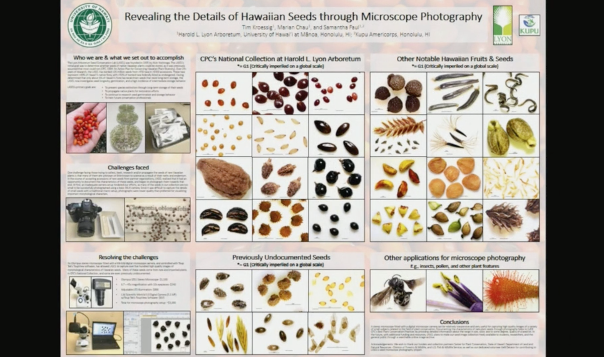
Tim Kroessig, Harold L. Lyon Arboretum The Hawaiian flora represents ~45% of all plants listed by the U.S. Fish and Wildlife Service as threatened or endangered. The Lyon Arboretum’s Seed Conservation Laboratory (Lyon S.C.L.) conserves many of these imperiled plants through conventional seed banking. However, the seeds of many rare Hawaiian plants have never been […]
Read More…
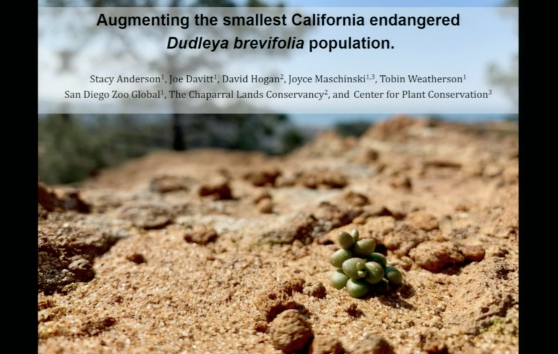
Stacy Anderson, Joe Davitt, Katie Heineman, David Hogan, Joyce Maschinski, and Tobin Weatherson, San Diego Zoo Global Declining small populations may be supported through augmentation. To aid the smallest of five populations of the tiny endangered succulent, Dudleya brevifolia, The Chaparral Lands Conservancy approached the San Diego Zoo Global Plant Conservation team to augment the […]
Read More…
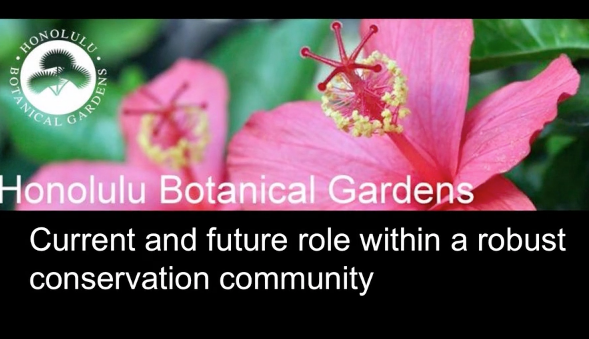
Talia Portner, Honolulu Botanical Gardens Hawaii has approximately 1400 native plant species of which more than 90% are found nowhere else in the world. However, at least 30% of these species are endangered and 100 have already gone extinct due to land use change, ongoing pressure from introduced species, and the loss of pollinators and […]
Read More…
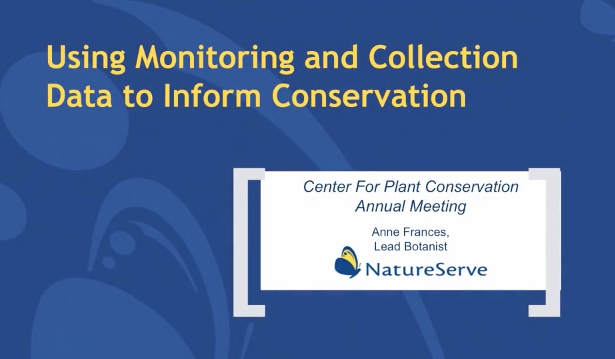
Anne Frances, NatureServe Conservation Status Assessments evaluate species’ risk of extinction and are therefore often the first step in prioritizing conservation actions. Red List Assessments (redlist.org) are widely used in globally while the NatureServe Network’s Ranks are more commonly used in the United States and Canada. Although methodologies between the platforms differ, much of information […]
Read More…

Shannon Fehlberg, Desert Botanical Garden The Acuña cactus, Echinomastus erectocentrus var. acunensis, is an endangered species with a restricted distribution in the Sonoran Desert in southern Arizona and northern Sonora, Mexico. Population-level genetic analyses for this species are lacking, and taxonomic boundaries between E. erectocentrus var. acunensis and its close relatives E. erectocentrus var. erectocentrus […]
Read More…
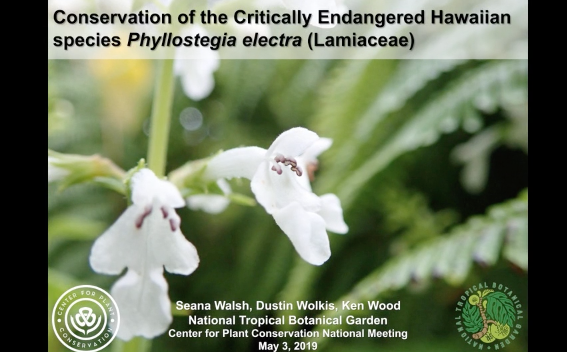
Seana Walsh, Dustin Wolkis, and Ken Wood, National Tropical Botanical Garden Phyllostegia electra (Lamiaceae) is endemic to the mesic and wet forests of Kaua’i. It is listed as Critically Endangered on the IUCN Red List of Threatened Species and is a focal species for achieving conservation objectives outlined in the Hawai’i Strategy for Plant Conservation. […]
Read More…
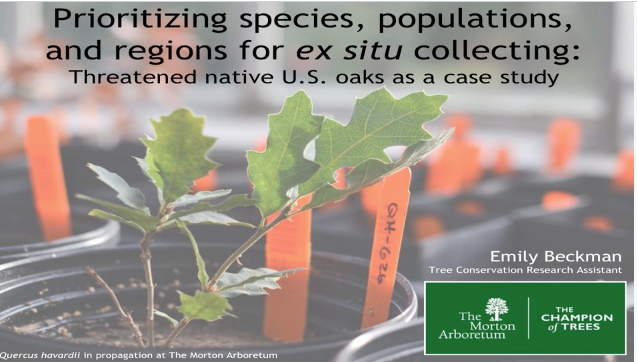
Oaks are keystone species across the majority of forest and shrubland habitats in the United States, but many are threatened with extinction in the wild. Ongoing conservation efforts exist for some native U.S. oak species, but growing threats and limited resources necessitate prioritization and coordination. To that end, The Morton Arboretum, BGCI-US, and the U.S. […]
Read More…
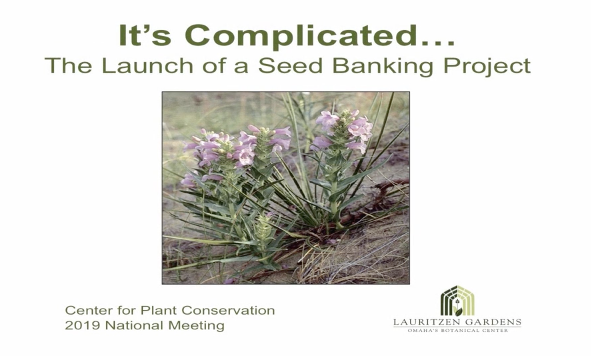
Jim Locklear, Lauritzen Gardens Blowout penstemon (Penstemon haydenii) is a critically imperiled (G1) plant listed as an endangered species by the USFWS. It is presently known from ten occurrences in the Nebraska Sandhills and three in the Ferris Dunes of Wyoming. This species is associated with areas of active wind erosion within a grassland matrix. […]
Read More…
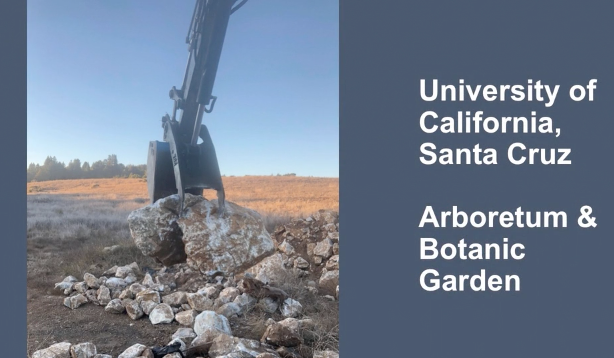
Martin F. Quigley, University of California-Santa Cruz Arboretum & Botanic Garden Our mission is to connect people with plants. Our conservation work is dedicated to preservation of biodiversity, and enabling evolutionary processes to continue at the population level. Our primary focus is California, particularly the Central Coast ecosystems. We are developing a 60 acre California […]
Read More…
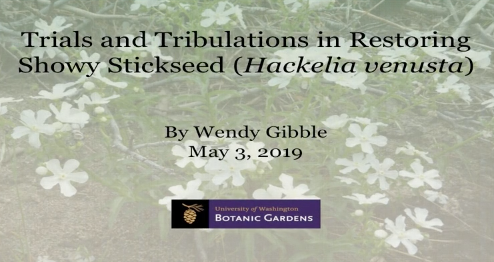
Wendy Gibble, University Of Washington Botanic Gardens Hackelia venusta (showy stickseed) is a narrow endemic plant known only from one population in central Washington. It was listed as an endangered species in 2002 when the population was estimated at 600 plants spread over 40 acres. The most recent survey in 2012 documented 477 plants. Building […]
Read More…
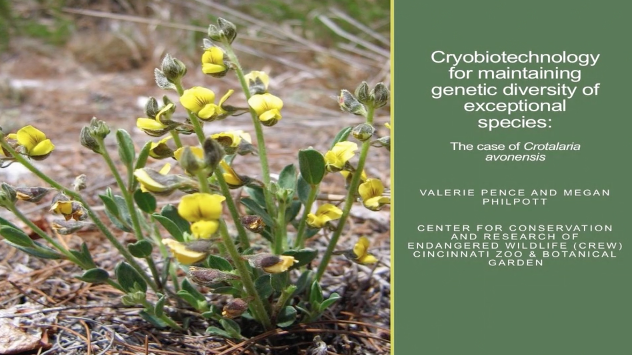
Valerie Pence and Megan Philpott, Cincinnati Zoo & Botanical Garden Crotalaria avonensis is a Florida endemic found in three populations and characterized by low seed production. In the late 1990s, CREW developed protocols for tissue culture propagation from field collected shoot cuttings as well as cryopreservation methods. In order to develop a genetically representative collection […]
Read More…
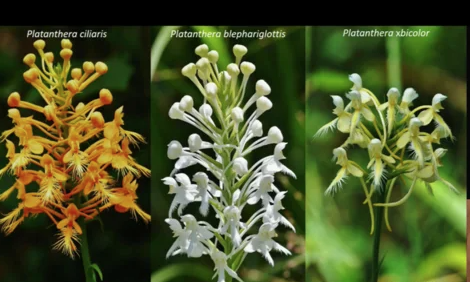
Ashley Clayton and Peter Zale, Longwood Gardens At the Valmont Bog in Hazelton, PA, there are populations of three, state-listed taxa of Platanthera: P. ciliaris, P. blephariglottis, and P. xbicolor, a natural hybrid of the other two species. They are threatened by forest succession, climate change, silt-laden runoff, and herbicide spraying. However, as is the […]
Read More…
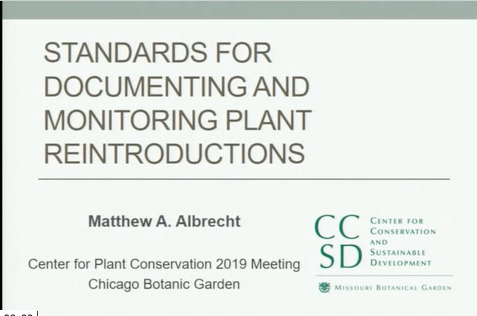
Matthew Albrecht, Missouri Botanical Garden Monitoring is a central component of reintroduction programs, but often receives less attention from practitioners than the preparation or implementation phases of a project. A well-designed monitoring program can detect changes in the environment over time, identify new threats that emerge at the reintroduction site, determine drivers of growth rates […]
Read More…
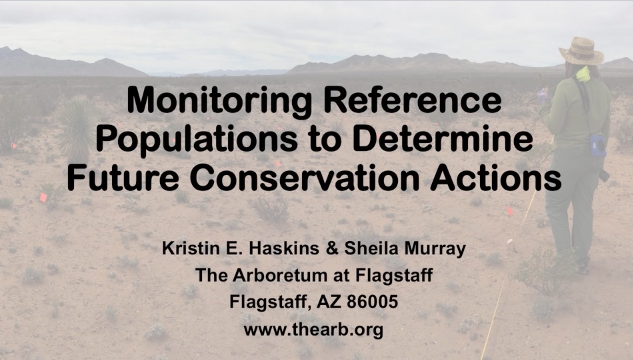
Kristin Haskins and Sheila Murray,The Arboretum at Flagstaff In 2013, The Arboretum at Flagstaff partnered with the Center for Plant Conservation and the Bureau of Land Management in New Mexico to examine conservation concerns of Chihuahua scurfpea (Pediomelum pentaphyllum), a tuber-forming legume. Our primary objective was to determine any changes in population size. In 2015, […]
Read More…
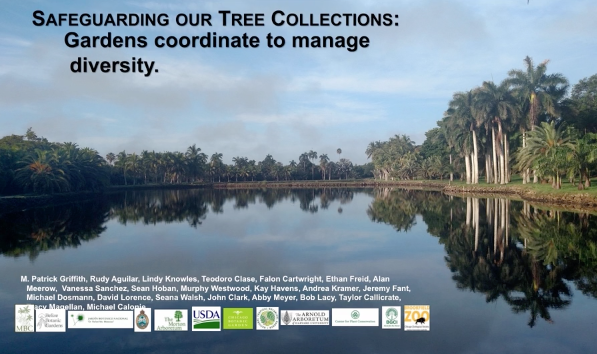
Patrick Griffith, Montgomery Botanical Center “Which plants should I grow, and how many?” The IMLS National Leadership Project, Safeguarding our Tree Collections, seeks to answer this fundamental question. Through structured comparisons of genetic data among major groups of seed plants, management recommendations and their broadness can be determined. Results show that careful consideration of the […]
Read More…
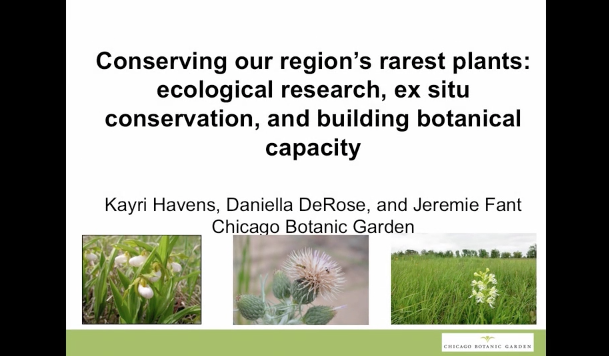
Kay Havens, Chicago Botanic Garden Chicago Botanic Garden’s Negaunee Institute for Plant Conservation and Science supports centers of excellence in conservation practice, science, and training, with an emphasis on understudied species with high conservation need. The research focuses primarily on preventing plant extinction, promoting plant diversity, and understanding plant interactions. Actions and outreach include advocacy, […]
Read More…

















